Upcoming Whale Shark visit: July 18-25, 2017. Cancun, Mexico in July? ...YES! This is when the whale sharks migrate through the area to feed in plankton rich waters. One of our favourite experiences! A trip that can be tailored to your wants and needs. Some stay longer, and many add some extra dive adventure excursions while they are in Mexico. Available adventures: -Cozumel scuba excursion -Whale shark encounters -Cenote diving -Beautiful reef diving -Night diving -Great shipwrecks to dive -Underwater museum (will a beautiful shallow reef beside it) - perfect for beginners! Accommodations: There are many options for accommodations, and we are still able to meet up for dives and some meals too! Some options (our dive shop in Cancun, Solo Buceo, picks us up for our dives by boat at each of these hotels/resorts): 1. Sota Vento - Economy Don't worry, we enjoy our stays there. It is clean, with dormitory-style rooms (pack a facecloth, they don't have any). It is not all inclusive, although they do offer a modest breakfast with coffee at the outdoor cafe in the morning. It is on water (yacht docking), but there is no beach. Some of our divers like the affordability of the Sota Vento hotel in Cancun (roughly 55-65 per night). http://sotavento-cancun-mx.ibooked.ca/ 2. Krystal Cancun Resort We haven't stayed here yet, but are thinking of trying it. It is close to Solo Buceo dive shop, lots of beach! http://krystalcancun.com/ 3. Hyatt Ziva - High End Leisure We stayed here for a portion of our whale shark trip last year, and it was lovely (all you can eat candy store included, HELLO!), but it is a pricier option. It is right beside the dive shop, so it is very convenient, and the rooms and restaurants are very, very nice. https://cancun.ziva.hyatt.com/en/hotel/home.html Some accommodations offer all-inclusive, and some do not. You can make this a pampering sort of vacation, or go a little more econo, but whatever you decide, we are sure to have a great time! We have found some great places to eat in town, and look forward to sharing the water adventure stories around the tables while we fill our starving bellies! You may choose to book several dives in addition to the whale shark excursion, or take a few days off to lounge in the sun. It's up to you! Talk to Jody about the diving you wish to do, Solo Buceo offers a better rate through Adventure Sports Newmarket Inc, than booking on your own. I am planning to try out my new macro lens at the shallow reef by the underwater sculpture museum. Not an advanced dive, but the reef boasts plentiful marine life, and last time we visited, we even found a baby turtle swimming by us, and found a spotted moray eel. Gabriel tells me there was a sea horse living in amongst the statues for a time, but he hasn't seen it now for a while (he's a divemaster and photographer with Solo Buceo). I hope we can find one! 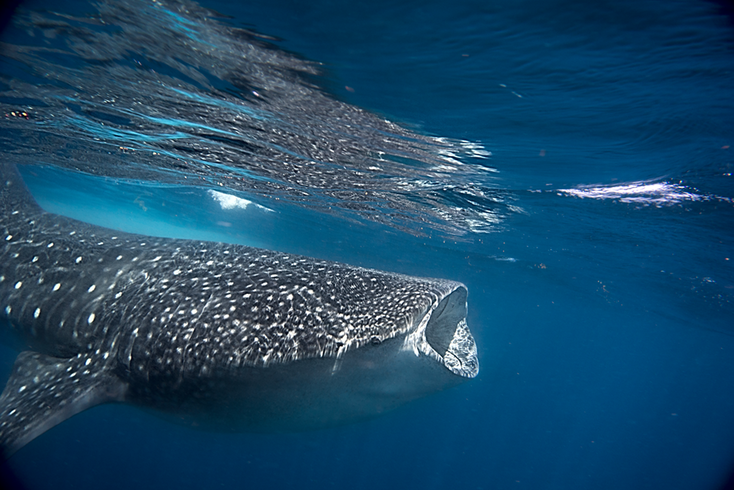 Hello, Beautiful - Big Kiss! Hello, Beautiful - Big Kiss! What Can You Expect? Blog from our trip July 2015. Mexico sounds like a place you wouldn't want to be in July, but since whale sharks migrate through the gulf during July and August, it is unavoidable if you want a relatively inexpensive experience with these gentle giants. And we discovered it wasn't so bad after all...a swim up pool bar made the week entirely tolerable (it was awesome)! *See video at bottom of blog. Whale Shark Day We arose that morning at 5:45 am. Completely ridiculous. Only the lure of catching a glimpse of these magnificent beasts could rouse me at such an obscene hour, and we were waiting with our snorkels, masks and fins on the dock at the appointed hour of 6:30 am. It was a beautiful day. We were touring today with Solo Buceo, a dive charter company in Cancun. Info for Whale Shark Travellers It is illegal in Mexico to scuba dive with these animals. Only snorkelling is permitted. And NO TOUCHING! Also, if you do not bring your own wetsuit, you will be given either a shorty wetsuit (first come, first served), or a lifejacket. No exceptions. I recommend bringing your own - at least you know EXACTLY who has peed in it. 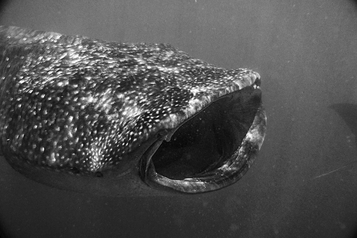 Just WOW. Just WOW. Finding Nemo ...or a whale shark is no easy task. It took an hour to get out to the open ocean, thankfully the weather was fine and we enjoyed the ride...and the view - flying fish were everywhere and one of them even flew into our boat! Having finally arrived out in REALLY open water, it was time to search. And search. And search. We sped to an area they are known to frequent, slowly trolled through the site looking for any telltale signs of fins, and then we were off to another site - repeat and repeat and repeat. We tried not to worry. After 2 hours of searching, the report came in we were waiting for - one of the other boats had found them - and we were off! As we approached, we could see many boats ahead already there, and several more speeding to the site to catch the action as we were. The sight of all those other boats made my heart sink a little. It seemed like an opportunity to glimpse these big guys was going to be all but impossible, and we were going to have to fight for the right with hundreds of other shark enthusiasts! Arrgh! Fun Whale Shark Facts They are the largest fish in the ocean (whales are mammals, not fish), and can grow up to 50 feet in length. For all their size, they eat tiny plant and animal plankton that grow and thrive near the water's surface. They just glide along with their enormous mouths open wide and filter lunch from the ocean water. They must have to eat constantly to sustain their giant size! 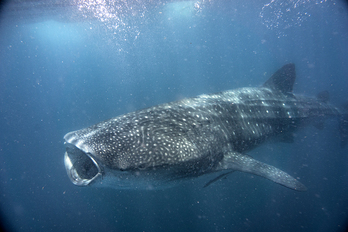 This activity is closely monitored by the Mexican government. A helicopter flew over us several times watching the circus. Each boat operator must have a licence and follow very strict rules. Only 2 or 3 of us could jump in with a shark at a time. Our captain was excellent, and maneuvered the boat safely on the outskirts of the mêlée, dropping a team relatively close to a shark when the opportunity struck. It was a little stressful at first, as we were ordered to JUMP! JUMP! JUMP NOW! ...only to be called back again a few minutes later. It was a little disheartening, but then everything changed. Slowly, the other boat operators disappeared. They had promised their clients a different kind of excursion and had to return them at the appointed times. We soon had the area to ourselves - space and freedom. Our captain loved it, as he could swing by and drop a team off in front of one whale shark, then float over to another to drop another team, and back again. We loved it too - it was heaven. THIS was what we came for! We were very lucky there were so many whale sharks in this area, as the day before they had only found two all day.  Cruella. Some ladies look beautiful and refreshed after a swim in the ocean. I'm not one of them. Cruella. Some ladies look beautiful and refreshed after a swim in the ocean. I'm not one of them. My Memorable Moments The first time I jumped into the water, I was just in time to see the massive whale shark dive down into the depths of the blue. Although it was quite a sight to see, it was all too brief, but THEN! A manta ray swooped in and did a graceful back-flip right in front of me! WHAAAAAT!!!! WOW! I was struggling with my snorkel at the time, and I'm sorry, my video is a little (a lot?) shaky. There were manta rays everywhere, and we even spotted a school of mobula rays. NOTE: snorkelling is actually HARDER than scuba diving! What I wouldn't give to put my scuba gear on, but I digress. My next favourite moment was cutting across to intercept a whale shark that had decided to turn course. OHMYGOODNESS! Unfortunately, while I thought I was video taping this, I was, in actual fact, not. I know. Anyway, this big and beautiful bad boy is coming straight at me and opens his mouth wide - YES! He came so close, I had to lift the camera so it wouldn't get swallowed up in his big yaw, take a deep breath and suck in my gut to avoid touching him as he slowly glided beneath me. It was so incredible watching the gorgeous patterns on his back pass beneath me until finally the huge mass tapered to the end of him and I finned a bit to the side to avoid his swishing tail. I will never, ever forget it. I just love these animals so much! If you consider this trip in the summer time, I highly recommend the Solo Buceo Cancun Dive Charter company. http://www.solobuceo.com/galeria.html Our captain was happy to stay as long as the whale sharks did, and we were happy to keep swimming with them, so we ended up enjoying a personal water park just for us. We will use them all the time when we visit Mexico.
0 Comments
As with everything in photography, it’s all about the light. The dome port is essentially an additional optical element, much like the lens itself, and it will reduce problems such as refraction, radial distortion, and chromatic aberrations. Refraction is the bending of light waves as they pass through the air inside the camera housing and the water outside the lens port. While light is refracted roughly 25 percent, the focal length of the lens increases by the same amount. You will remember that wearing your facemask under water is different than wearing it on land. Underwater, the laws of refraction cause objects to appear larger and closer - the same distortion occurs with a flat port lens. When a dome port is used, the rays of light pass through the curvature of the dome, avoiding refraction, and allowing the interior lens to retain its angle of view. Radial Distortion becomes more prevalent with wide angle lenses and large apertures when used with flat ports. The effect is a blur that progresses from the sharpest point in the centre of the frame to the outer edge. The dome port significantly reduces this distortion effect because we have already reduced the problems of refraction. 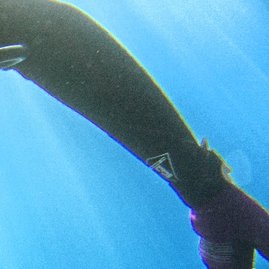 Chromatic Aberration Chromatic Aberration Chromatic Aberrations are happily avoided when using a dome port, since it is the refraction of light that causes white light to be separated into the different wave lengths of the colour spectrum. Colours within the spectrum do not travel at the same speed, so as light rays travel from water, through glass, to air, they will be unequally bent, causing the different colours to overlap – particularly noticeable on the edges within the image. Dome Ports Underwater are Different When using a dome port underwater, the “virtual image” must be focused on, not the “actual subject” itself. The virtual image is created inches in front of the lens with the dome port. This is why the virtual image must be focused on for under/over shots, while using a small aperture (high f-stop) to create enough depth of field to capture the “above the waves” image at the same time. Under/Overs
|
FlickrAlbumAuthorsJill Smith Archives
January 2024
Categories
All
|
Our Services |
Company |
SupportOur Blog
|
|
Copyright © 2014
|
Newmarket, ON
|
(905) 898 5338
|

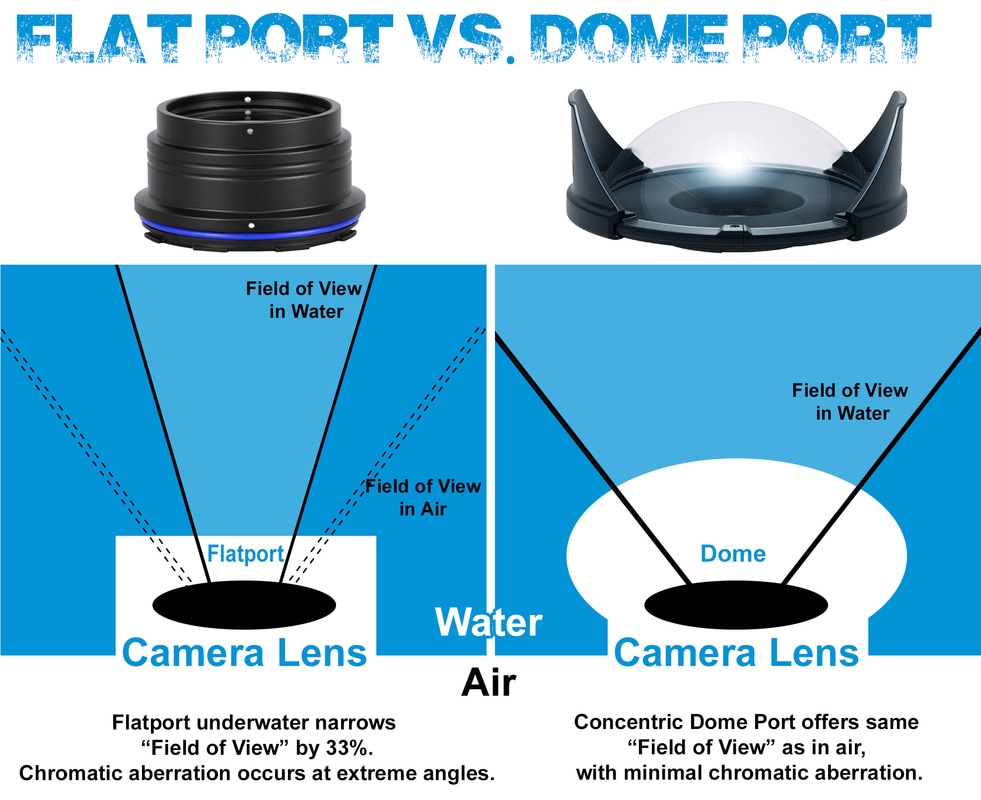
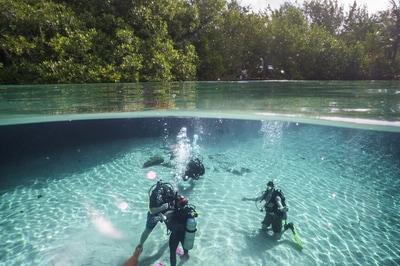
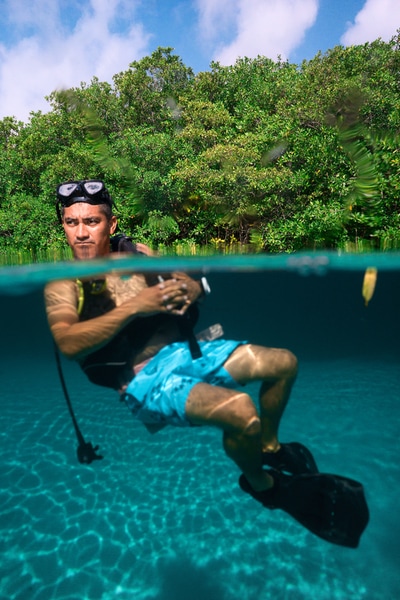

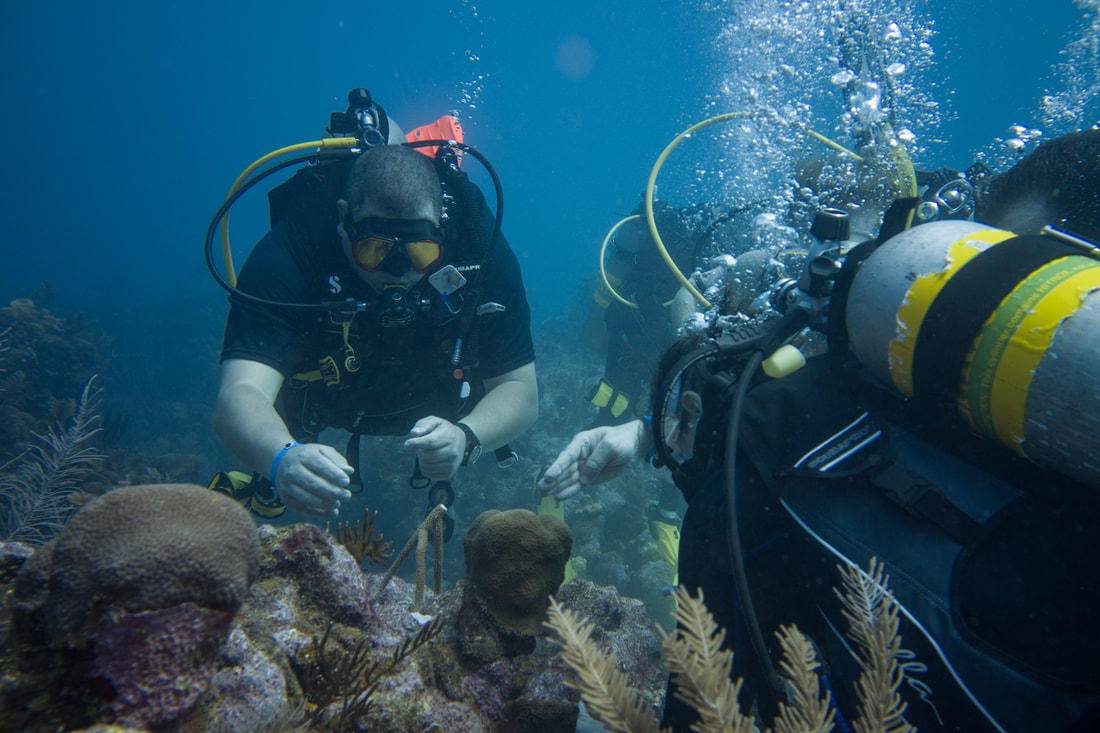
 RSS Feed
RSS Feed

